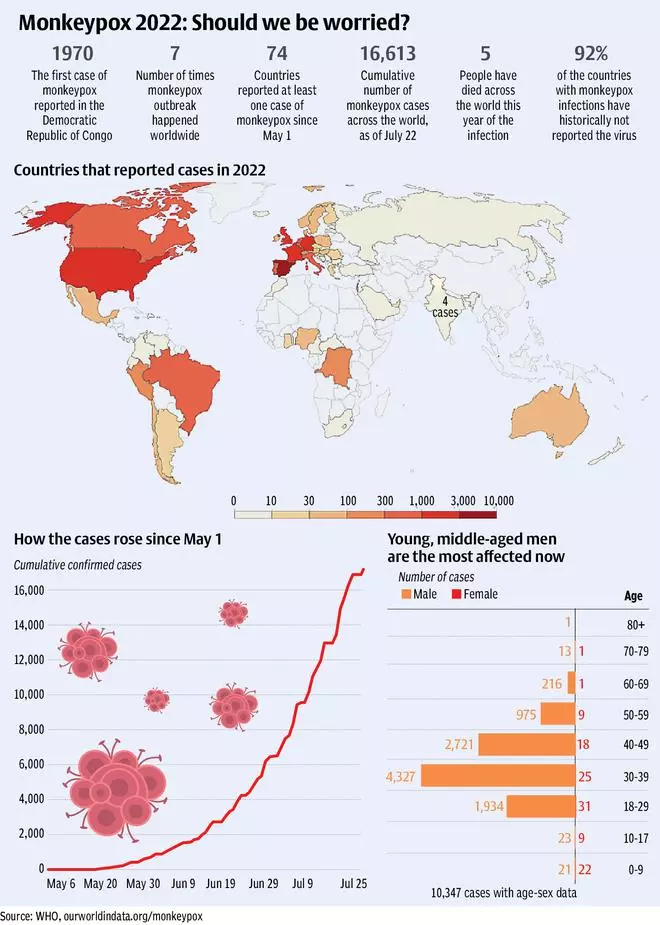The World Health Organization (WHO) has recently declared the current monkeypox epidemic a global health emergency. This, at a time when people and economies across the world are still struggling to recover from the havoc that the Covid-19 pandemic caused. But how serious is the current outbreak and should we be worried?
Monkeypox is a viral disease which is believed to have originated in the Democratic Republic of Congo in 1970 and was limited to a few countries in Central and West Africa. However, between May 1 and July 22 this year, 74 countries across the world have reported at least one case of monkeypox infection, according to WHO.
Data shows as much as 92 per cent of them “have not historically reported monkeypox”. This is a list of 68 countries, including India. The other six countries are Cameroon, Central African Republic, Democratic Republic of the Congo, Ghana, Nigeria and Republic of the Congo.

Who is getting affected?
According to the WHO, most of the people affected by monkeypox are young to middle-aged men. The data says 98.9 per cent of the infected people are men and the median age of an infected person is 36. “Males between 18 and 44 years of age continue to be disproportionately affected by this outbreak as they account for 77.5 per cent of cases,” it says.
The UN body also made an observation with regard to HIV-AIDS. It says, of the total monkeypox-affected people, whose HIV status was known, 41.4 per cent (1,120/2,705) were HIV-positive. “Note that information on HIV status is not available for the majority of cases, and for those for which it is available, it is likely to be skewed towards those reporting positive HIV results,” it adds. The WHO data also says that in more than 90 per cent of the cases, the virus spread through sexual contact.
Common symptoms of the disease include fever and rash. “Among the cases that reported at least one symptom, the most common symptom is any rash and is reported in 89 per cent of cases with at least one reported symptom,” says a WHO report. While 45 per cent of the people reported fever, 28 per cent had swelling of lymph nodes.
Spike in cases
The outbreak began on May 6, 2022, with a cluster of cases getting reported in the UK. As of July 22, 2022, as many as 16,613 monkeypox cases have been recorded worldwide. Spain accounts for almost 20 per cent of those cases (3,125), followed by the United States with 2,890 cases. They are followed by Germany, UK and France where the number of cases are 2,268, 2,208 and 1,567, respectively.
The number of cases has jumped since June, with more countries raising their guards and testing its citizens. Between July 15 and 26, India reported four cases of monkeypox. However, only five deaths owing to the disease have been reported worldwide, making the fatality rate 0.03 per cent.
“The chances of this becoming a pandemic is quite unlikely. The reassuring fact is the low death rate and that it doesn’t spread like Covid,” says Padmanabha Shenoy Consultant Rheumatologist and Immunologist, Centre for Arthritis and Rheumatism Excellence (Care), Kochi.





Comments
Comments have to be in English, and in full sentences. They cannot be abusive or personal. Please abide by our community guidelines for posting your comments.
We have migrated to a new commenting platform. If you are already a registered user of TheHindu Businessline and logged in, you may continue to engage with our articles. If you do not have an account please register and login to post comments. Users can access their older comments by logging into their accounts on Vuukle.